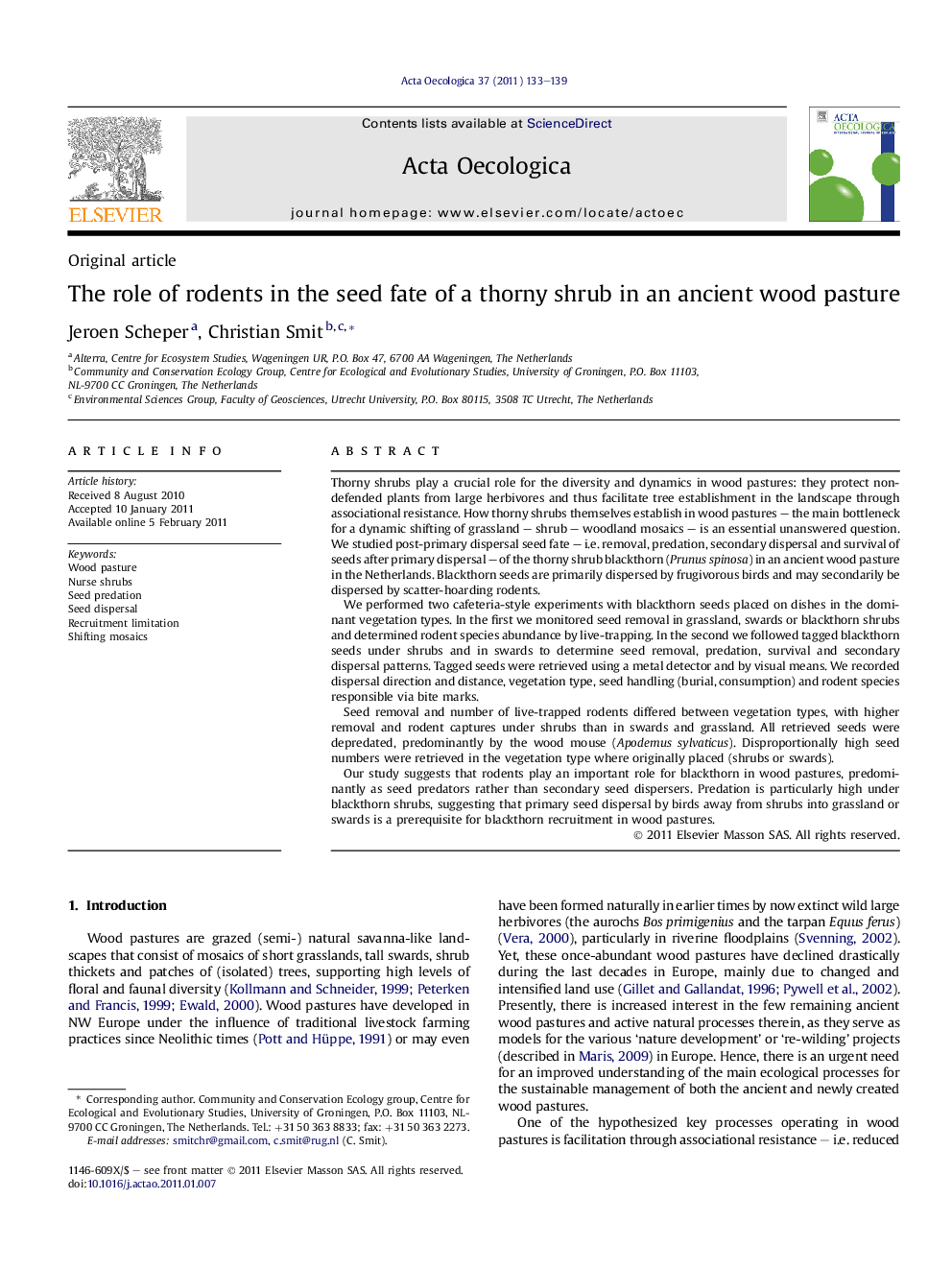| Article ID | Journal | Published Year | Pages | File Type |
|---|---|---|---|---|
| 4380942 | Acta Oecologica | 2011 | 7 Pages |
Thorny shrubs play a crucial role for the diversity and dynamics in wood pastures: they protect non-defended plants from large herbivores and thus facilitate tree establishment in the landscape through associational resistance. How thorny shrubs themselves establish in wood pastures – the main bottleneck for a dynamic shifting of grassland – shrub – woodland mosaics – is an essential unanswered question. We studied post-primary dispersal seed fate – i.e. removal, predation, secondary dispersal and survival of seeds after primary dispersal – of the thorny shrub blackthorn (Prunus spinosa) in an ancient wood pasture in the Netherlands. Blackthorn seeds are primarily dispersed by frugivorous birds and may secondarily be dispersed by scatter-hoarding rodents.We performed two cafeteria-style experiments with blackthorn seeds placed on dishes in the dominant vegetation types. In the first we monitored seed removal in grassland, swards or blackthorn shrubs and determined rodent species abundance by live-trapping. In the second we followed tagged blackthorn seeds under shrubs and in swards to determine seed removal, predation, survival and secondary dispersal patterns. Tagged seeds were retrieved using a metal detector and by visual means. We recorded dispersal direction and distance, vegetation type, seed handling (burial, consumption) and rodent species responsible via bite marks.Seed removal and number of live-trapped rodents differed between vegetation types, with higher removal and rodent captures under shrubs than in swards and grassland. All retrieved seeds were depredated, predominantly by the wood mouse (Apodemus sylvaticus). Disproportionally high seed numbers were retrieved in the vegetation type where originally placed (shrubs or swards).Our study suggests that rodents play an important role for blackthorn in wood pastures, predominantly as seed predators rather than secondary seed dispersers. Predation is particularly high under blackthorn shrubs, suggesting that primary seed dispersal by birds away from shrubs into grassland or swards is a prerequisite for blackthorn recruitment in wood pastures.
Research highlights► Post-primary dispersal seed fate of a thorny shrub was studied in a wood-pasture. ► Rodent seed removal and dispersal was monitored in different vegetation types. ► Seed removal was higher under shrubs than in swards and grasslands. ► All retrieved tagged seeds were depredated by rodents. ► Establishment of thorny shrubs requires primary seed dispersal away from shrubs.
